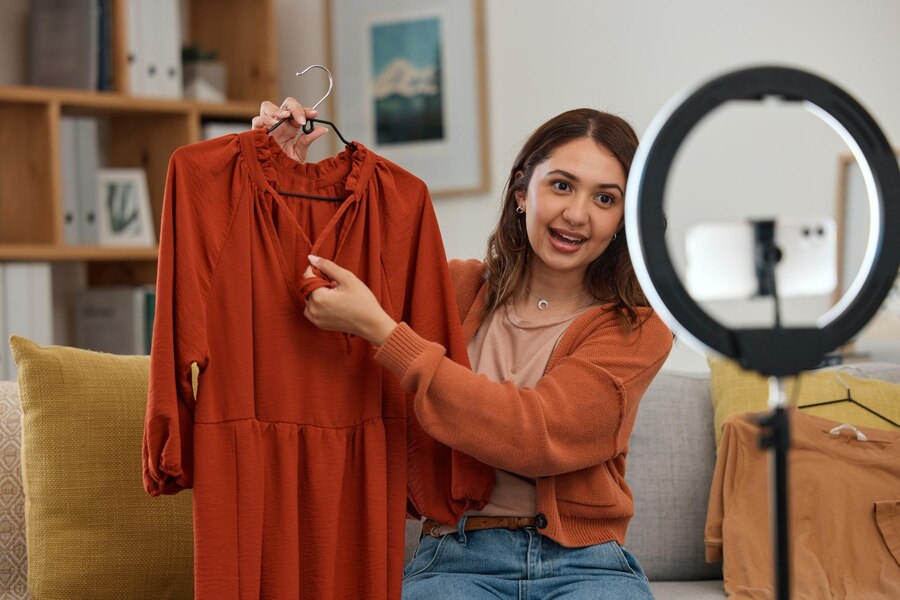When you first start out as a fashion influencer, it feels like you’re on a runway with a million people watching you. The lights are bright, the stakes are high, and every move matters. But let’s be honest: most beginners trip over their own stilettos before they get the hang of it. It’s hard to be a fashion influencer, and it’s easy to make mistakes that can slow your growth or even ruin your reputation. But don’t worry. I’m here to tell you about the biggest mistakes new fashion influencers make and give you real, no-nonsense ways to fix them. This isn’t just another useless guide; it’s your backstage pass to avoiding problems and building a brand that rocks.
Contents
- 1 Common Mistakes and How to Fix Them
- 2 Frequently Asked Questions
- 2.1 How can I make my fashion influencer account bigger without copying others?
- 2.2 Do I need to buy a lot of expensive gear to make good content?
- 2.3 How often should I post as a new fashion influencer?
- 2.4 What makes fast fashion bad for influencers?
- 2.5 How do I figure out how much to charge for working with brands?
Common Mistakes and How to Fix Them
Putting followers ahead of honesty
Imagine this: you’re looking through Instagram, and every new influencer has the same trendy outfit, posed mirror selfie, and filter. One of the worst things new fashion influencers do is put follower count ahead of being real. A lot of people think that copying big accounts or following every trend will make them famous. Spoiler alert: it won’t. People can tell when something isn’t real from a mile away, and they’ll swipe past you faster than you can say “OOTD.”
How to fix it:
- Don’t be sorry for being yourself. Your superpowers are your own style, voice, and point of view.
- Talk about your story, your quirks, and how you got into fashion.
- Instead of following every trend, focus on making content that feels real to you.
- Look to sites like The Sustainable Fashion Forum for ideas. Influencers like Kate Hall built real brands by sticking to their values.
Quick Tips:
- Tell your style story
- Talk about your unique traits
- Don’t just follow trends
- Be real to build trust
Not paying attention to SEO and content strategy
SEO is a game-changer for influencers as well as bloggers and big websites. Not paying attention to it is like making a beautiful outfit and then hiding it away. You’re missing out on organic traffic that could make you much more visible if your Instagram captions, blog posts, or YouTube videos aren’t optimized. A lot of new people post without doing keyword research, using hashtags correctly, or organizing their content so that it will show up in search engines.
How to fix it:
- Use Google Keyword Planner or Ahrefs to find high-traffic keywords like “sustainable fashion tips” or “how to style oversized blazers.”
- Use keywords naturally in captions, video descriptions, and blog posts.
- Use a mix of niche and popular hashtags, like #SustainableFashion and #OOTD. Use headings, short paragraphs, and alt text for images. Hootsuite and other tools have great hashtag strategies that can help you reach more people.
Table: Fashion Influencers’ Keyword and Hashtag Strategy
| Platform | Best Practices | Example Keyword/Hashtag |
|---|---|---|
| Use a mix of niche and popular hashtags, alt text | #SustainableFashion, #ThriftFinds | |
| Blog | Use keywords in titles and subheadings | “How to Style Oversized Blazers” |
| YouTube | Use keywords in title, description, and tags | “Sustainable Fashion Haul 2025” |
Too Much Fast Fashion
Fast fashion is like a cheap, sparkly dress you buy for one night. It looks good for a while, but then it falls apart. New influencers often rely on brands like Shein and Fashion Nova a lot because they are cheap and fashionable. But promoting fast fashion can make people trust you less. More and more people are aware of moral and environmental issues, and they may question your choices.
How to fix it:
- Focus on quality and sustainability.
- Look into thrifted items, capsule wardrobes, and brands that are good for the environment.
- Combine high-street clothes with second-hand finds, or buy classic pieces that will last.
- Share why you made the choices you did, like buying a used leather jacket or supporting eco-friendly designers.
Quick Tips:
- Shop at thrift stores for one-of-a-kind items
- Combine eco-friendly brands with your style
- Teach your audience about mindful fashion
- Focus on longevity, not just trends
Not paying attention to community and engagement
It’s a rookie mistake to see followers as numbers instead of people. Engagement isn’t just nice; it’s necessary for growth. Accounts that get a lot of engagement get more visibility, and a community that is active can make your influence even bigger.
How to fix it:
- Respond to comments daily.
- Use captions to start conversations by asking questions like, “What’s your favorite fall accessory?”
- Interact with your followers’ content and collaborate with other creators in your niche.
- Take inspiration from influencers like Jessica Harumi, who built loyal communities by interacting meaningfully (Meltwater article).
Not spending enough on quality visuals
Fashion is all about looks, so bad content is a big mistake. Even the most fashionable outfit can look bad if the pictures are blurry, the lighting is bad, or the background is too busy.
How to fix it:
- Take pictures in natural light, like near windows or during golden hour.
- Keep backgrounds clean and clutter-free.
- Use apps like Lightroom, VSCO, or Canva for editing.
- Buy a tripod for videos and learn basic editing with CapCut.
Quick Tips:
- Use natural light
- Keep backgrounds clean
- Edit consistently
- Keep videos steady and polished
Posting too much or too little
It takes trial and error to find the right posting rhythm. Too many posts can overwhelm your followers, and too few posts can make you forgettable. Both extremes can stop growth.
Related: How Yoga Prevents Lifestyle Diseases Naturally
How to fix it:
- Post on Instagram three to five times a week and do Stories daily.
- Post 1–2 high-quality pieces weekly on blogs or YouTube.
- Plan and schedule content with tools like Later.
- Repurpose content across platforms (blog, carousel, TikTok clips).
Not knowing how much you are worth
Many new influencers undervalue their time and creativity. Accepting free items or low offers may feel good initially, but it hurts in the long run. Charging too much without stats can also turn brands off.
How to fix it:
- Track followers, engagement, and content performance.
- Show value in pitches by highlighting your niche audience, engagement, and past campaigns.
- Keep a media kit ready.
- Learn negotiation through guides like GRIN.
Quick Tips:
- Track metrics (Instagram Insights, Google Analytics)
- Prepare a media kit
- Be firm but polite when negotiating
- Know what your audience values
Frequently Asked Questions
How can I make my fashion influencer account bigger without copying others?
Focus on your unique style, story, or point of view. Engage your audience and check The Sustainable Fashion Forum for guidance.
Do I need to buy a lot of expensive gear to make good content?
Not at all! Use a smartphone, natural light, and free apps like VSCO or CapCut. Canva tutorials help beginners.
How often should I post as a new fashion influencer?
Consistency is key: 3–5 times a week on Instagram, daily Stories, and 1–2 quality posts weekly on blogs or YouTube.
What makes fast fashion bad for influencers?
Fast fashion often raises moral and environmental concerns. Promote thrifting, capsule wardrobes, and eco-friendly brands to build trust.
How do I figure out how much to charge for working with brands?
Track audience demographics and engagement, have a media kit, and negotiate based on your value. Guides like GRIN are helpful.
To finish
It’s fun to be a fashion influencer, but it’s not all glitz and glam. You can get into trouble by chasing followers, ignoring SEO, relying on fast fashion, not engaging with your audience, posting poor visuals, posting inconsistently, or not valuing your worth.
The good news? Every mistake can be fixed. Be authentic, learn new skills, engage with your community, and value your work. There’s always room for someone creative and genuine. Put on your boots, walk the runway, and show the world your style. You can do this.





